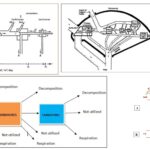Basic Microbiology 14 Views 1 Answers
Sourav PanLv 9September 4, 2024
Why does the human system has three separate complement pathways when all of them converge to a single result, i.e. cell lysis?
Why does the human system has three separate complement pathways when all of them converge to a single result, i.e. cell lysis?
Please login to save the post
Please login to submit an answer.
Sourav PanLv 9May 15, 2025
The human immune system has three separate complement pathways—classical, alternative, and lectin—because they provide multiple mechanisms for detecting and responding to pathogens, ensuring a robust and adaptable immune response. Here’s why having these distinct pathways is beneficial:
- Diverse Pathogen Recognition:
- Classical Pathway: Activated by antibodies bound to antigens on pathogens or infected cells. This pathway integrates with the adaptive immune response, providing specificity and memory.
- Alternative Pathway: Activated directly by pathogen surfaces, such as bacterial cell walls or other foreign materials, without the need for antibodies. This pathway provides a rapid response to newly encountered pathogens.
- Lectin Pathway: Activated by lectins binding to specific carbohydrate patterns on pathogen surfaces. This pathway provides an additional mechanism for recognizing and responding to pathogens based on their carbohydrate structures.
- Enhanced Immune Response:
- The separate pathways allow for complementary and overlapping functions. Each pathway can activate complement components in different ways, amplifying the immune response and ensuring that a broad range of pathogens can be targeted effectively.
- Amplification and Efficiency: Each pathway leads to the same terminal complement cascade that results in pathogen destruction, but the diversity in activation mechanisms ensures that the system can respond more efficiently and effectively to various types of threats.
- Redundancy and Backup:
- Having multiple pathways provides redundancy. If one pathway is compromised or less effective, the others can still function to ensure that the complement system can perform its protective roles, including opsonization, inflammation, and cell lysis.
- Adaptive and Innate Integration:
- The classical pathway links the adaptive immune system (through antibody recognition) with the innate immune system (through complement activation), while the alternative and lectin pathways provide innate immune responses. This integration enhances the overall immune response.
0
0 likes
- Share on Facebook
- Share on Twitter
- Share on LinkedIn
0 found this helpful out of 0 votes
Helpful: 0%
Helpful: 0%
Was this page helpful?




